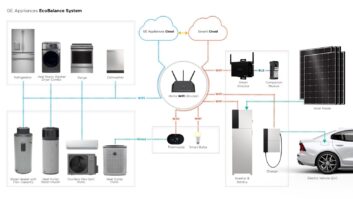Fretter reported a massive loss for its fiscal third quarter after taking $158 million in special charges, mainly related to the shuttering of its Silo unit. Also, Fretter said, it was in default on its credit and loan agreements and may have to seek protection under Chapter 11. For the three months ended October 31, the Brighton, Mich., retailer had a loss of $188.9 million that included: charges of $55.1 million covering lease disposition, disposal of fixed assets, and employee terminations; a goodwill write-off of about $83 million; and a $20 million loss on inventory sales at now-closed stores.
In the same 1994 period it had a loss of $1.31 million. Sales for the quarter fell 34.2% to $134.2 million, and same-store sales were down 45.1%. Fretter didn’t issue nine-month results, but the indication is it had a loss of $203.6 million, against a year-earlier deficit of $6.2 million, and that sales totaled $458.7 million, down 22.5%.
In a program to close unprofitable stores, Fretter has shut 150 Silo outlets and placed its Silo operating subsidiary, Dixons Holdings, in Chapter 11 (TWICE, December 18, 1995, page 97). It also shut 19 Dash Concepts (autosound) and 23 Fretter outlets. At the end of the quarter it obtained a waiver of the terms of two loan covenants that cut its credit limit to $50 million from $140 million, and it was in default of its inventory finance agreement and its bank facility for capital expenditures.
Fretter is now reviewing with advisers “various alternative strategies, each of which would lead to a material adverse impact on the ability of the company to continue its current operations in the current fashion,” and it is considering filing a Chapter 11 petition for itself and subsidiaries.◊Digital Audio Radio Field-Testing Scheduled To Re-Start January 31Field-testing of digital audio radio (DAR) systems is resuming under an agreement by the EIA and two other trade groups on test procedures that will avoid interference with aircraft and aerospace vehicles.
Following agreements with the National Telecommunications And Information Administration and the Aerospace And Flight Test Radio Coordinating Council, EIA filed an amended application to the FCC to use L-band frequencies to field-test the Eureka DAR system in San Francisco where it will test six other systems. EIA expects to get an FCC experimental license in time to start field tests January 31. The result of the field tests and lab tests would be forwarded to the FCC for use in determining a standardized format or formats for digital audio broadcasting in the U.S. EIA subcommittees and the National Radio Systems Committee are evaluating the seven DAR proposals and expect to present their findings to the FCC by the middle of the year, EIA said.
Meanwhile, the Consumer Electronics Manufacturers Association (CEMA), an EIA unit, acknowledged that the presentation might include some incongruities between the lab and field tests of the in-band on-channel (IBOC) systems proposed by USA Digital Radio and the AT&T/Amati partnership. These systems would permit a radio station to transmit digital and analog signals simultaneously on the same frequency.
For the field tests, the two IBOC proponents were allowed to make changes to their systems, and as a result, a CEMA spokesperson said, “the field tests won’t have lab tests backing them up.” The IBOC proponents were ready to “bail out” of the testing program unless they were allowed to make changes, the spokesperson said. As justification for their demand, the IBOC proponents contended that Eureka was allowed to make changes to its system for the field tests, although CEMA denied the claim. The CEMA and NRSC subcommittees “could request additional lab tests of the IBOC systems,” the CEMA spokesperson said, “but the IBOCs would have to pay for them.”
USA Digital Radio’s three IBOC systems and AT&T/Amati’s IBOC system didn’t perform as well in the lab tests as the other systems, which include a Voice Of America/Jet Propulsion Laboratory satellite S-band system, Eureka’s L-band terrestrial system, and an AT&T system, which would operate in the FM band on frequencies adjacent to existing FM-station frequencies.
Clarification
Pricing on new Samsung home office products were misstated in a recent report. Its FX4220 color multifunction unit will retail in the $699-$799 range, while the the FX4000 plain paper monochrome fax will be in the $499-$599 range. Samsung said the products were developed through an OEM arrangement with Lexmark.
Loss At CE Unit Cuts Nokia Net
Nokia of Finland said it expects to report significantly lower earnings for the final four months of the year as a result of a sharp loss at its European consumer electronics business and a sub par performance from its mobile phone business. Nokia said the downturn at the Nokia Mobile Phones unit came “despite improvements in the U.S. mobile phone business.”
In a telephone interview, CEO Jorma Ollila said that component shortages and “occasional growing pains in terms of logistics” were the cause of the problems with the phone market. Nokia believes the phone market still has great potential, Ollila said. He looks for 30% to 45% growth in telecommunications systems and mobile sales in 1996, and is sticking with an estimate of “350 million cellular subscribers in the world in year 2000.”
Ollila blamed the loss in consumer electronics on a sluggish European market for color TV. Nokia is Europe’s third largest domestic CE marketer, with annual sales of about $700 million.
Nokia is restructuring its consumer electronics operation.













